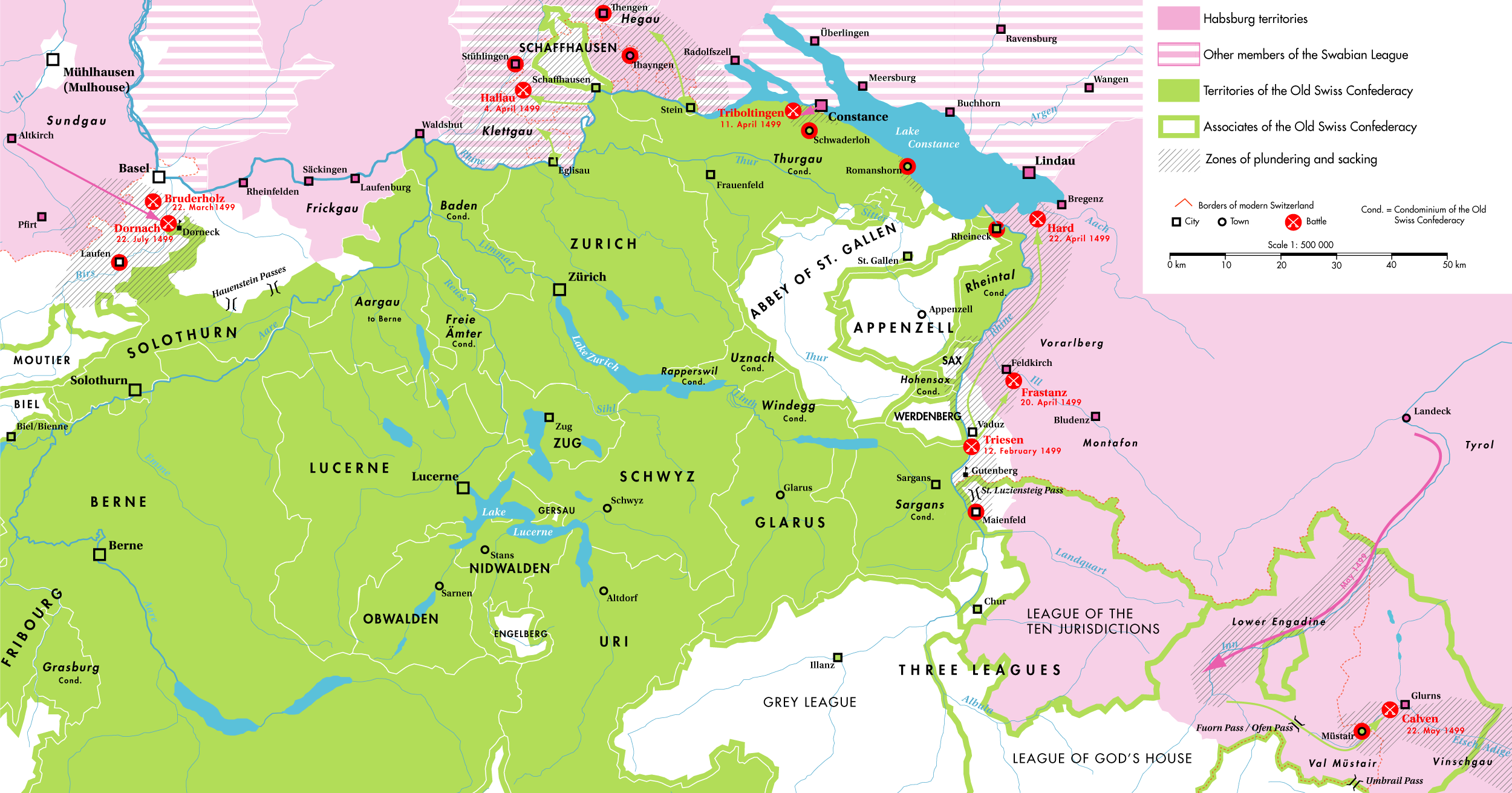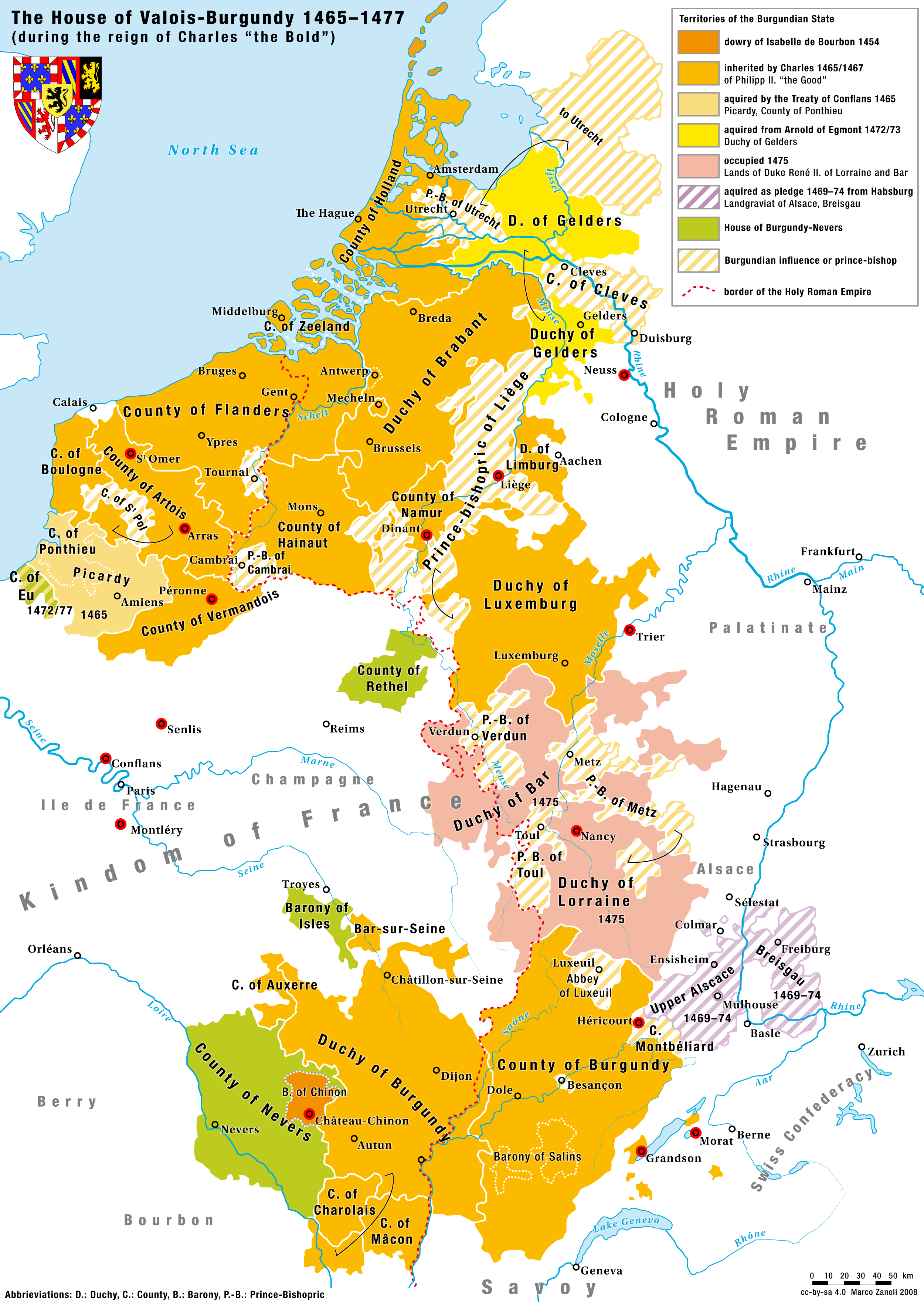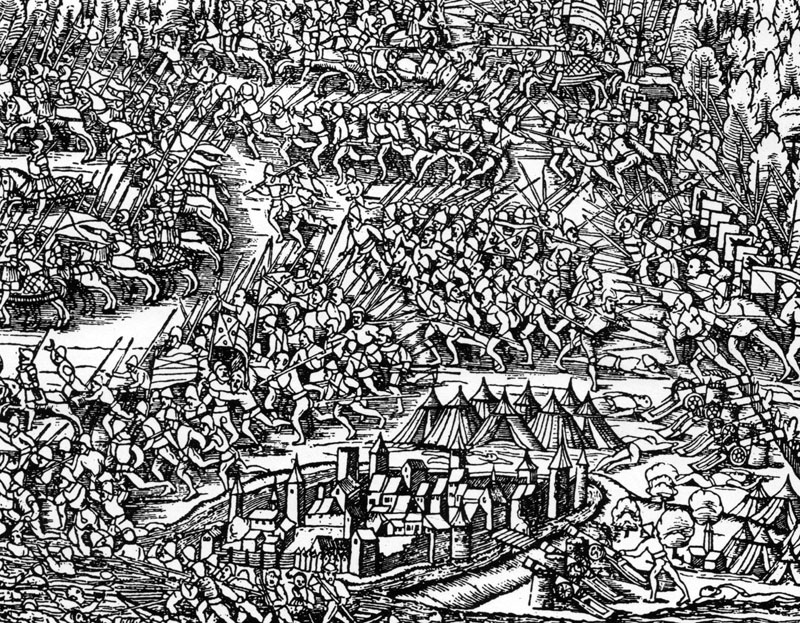|
Erlach Family
The Erlach family was a Bernese Patrician (post-Roman Europe), patrician family. They first became citizens of Bern around 1300. During the 17th and 18th centuries they were one of the leading families in Bern. For centuries the family served as senior military commanders in both Bern and in foreign armies. They were mayors of Bern and ruled over many other towns and cities in western Switzerland. Several family members received the upper nobility title "Reichsgraf". From landless knights to mayors of Bern The Erlach family is first mentioned as a ministerialis (or unfree knight) family in the service of the Counts of Nidau. Initially they were the castellans in Erlach Castle in the town of Erlach, Switzerland, Erlach on Lake Biel. By 1300 they were citizens of Bern and had tied their fate to the city. According to the historian Conrad Justinger, in 1339 Rudolf von Erlach (1299-1360), Rudolf von Erlach led the victorious Bernese forces at the Battle of Laupen. In the f ... [...More Info...] [...Related Items...] OR: [Wikipedia] [Google] [Baidu] |
Canton Of Bern
The canton of Bern, or Berne (; ; ; ), is one of the Canton of Switzerland, 26 cantons forming the Switzerland, Swiss Confederation. Its capital city, Bern, is also the ''de facto'' capital of Switzerland. The bear is the heraldic symbol of the canton, displayed on a red-yellow background. Comprising Subdivisions of the canton of Bern, ten districts, Bern is the second-largest canton by both surface area and population. Located in west-central Switzerland, it is surrounded by eleven cantons. It borders the cantons of canton of Jura, Jura and canton of Solothurn, Solothurn to the north. To the west lie the cantons of canton of Neuchâtel, Neuchâtel, canton of Fribourg, Fribourg, and canton of Vaud, Vaud. To the south lies the cantons of canton of Valais, Valais. East of the canton of Bern lie the cantons of Canton of Uri, Uri, Canton of Nidwalden, Nidwalden, Canton of Obwalden, Obwalden, Canton of Lucerne, Lucerne and Canton of Aargau, Aargau. The geography of the canton includes ... [...More Info...] [...Related Items...] OR: [Wikipedia] [Google] [Baidu] |
Fribourg
or is the capital of the Cantons of Switzerland, Swiss canton of Canton of Fribourg, Fribourg and district of Sarine (district), La Sarine. Located on both sides of the river Saane/Sarine, on the Swiss Plateau, it is a major economic, administrative and educational centre on the cultural border between German-speaking Switzerland, German-speaking and Romandy, French-speaking Switzerland. Its Old town, Old City, one of the best-maintained in Switzerland, sits on a small rocky hill above the valley of the Sarine. In 2018, it had a population of 38,365. History Prehistory The region around Fribourg has been settled since the Neolithic period, although few remains have been found. These include some flint tools found near Bourguillon, as well as a stone hatchet and bronze tools. A river crossing was located in the area during the Roman Empire, Roman Era. The main activity in the Swiss plateau went through the area to the north, however, and was instead centered around the valley o ... [...More Info...] [...Related Items...] OR: [Wikipedia] [Google] [Baidu] |
Swabian War
The Swabian War of 1499 ( (spelling depending on dialect), called or ("Swiss War") in Germany and ("War of the Engadin" in Austria) was the last major armed conflict between the Old Swiss Confederacy and the House of Habsburg. What had begun as a local conflict over the control of the Val Müstair and the Umbrail Pass in the Grisons soon got out of hand when both parties called upon their allies for help; the Habsburgs demanding the support of the Swabian League, while the Federation of the Three Leagues of the Grisons turning to the Swiss '' Eidgenossenschaft''. Hostilities quickly spread from the Grisons through the Rhine valley to Lake Constance and even to the Sundgau in southern Alsace, the westernmost part of the Habsburg region of Further Austria.The main references used are Morard in general and Riezler for the detailed chronology in the section on the course of the war. Many battles were fought from January to July 1499, and in all but a few minor skirmishes, th ... [...More Info...] [...Related Items...] OR: [Wikipedia] [Google] [Baidu] |
Burgundian Wars
The Burgundian Wars (1474–1477) were a conflict between the Burgundian State and the Old Swiss Confederacy and its allies. Open war broke out in 1474, and the Duke of Burgundy, Charles the Bold, was defeated three times on the battlefield in the following years and was killed at the Battle of Nancy in 1477. The Duchy of Burgundy and several other Burgundian lands then became part of France, and the Burgundian Netherlands and Franche-Comté were inherited by Charles's daughter, Mary of Burgundy, and eventually passed to the House of Habsburg upon her death because of her marriage to Maximilian I, Holy Roman Emperor. Background The dukes of Burgundy had succeeded, over a period of about 100 years, in establishing their rule as a strong force between the Holy Roman Empire and France. The consolidation of regional principalities with varying wealth into the Burgundian State brought great economic opportunity and wealth to the new power. A deciding factor for many elites in consol ... [...More Info...] [...Related Items...] OR: [Wikipedia] [Google] [Baidu] |
Murten
Murten (German language, German, ) or Morat (French language, French, ; ) is a bilingual Municipalities of Switzerland, municipality and a city in the See (district of Fribourg), See district of the Cantons of Switzerland, canton of Fribourg (canton), Fribourg in Switzerland. It is located on the southern shores of Lake Morat (also known as Lake Murten). Morat is situated between Neuchâtel and Fribourg and is the capital of the See/Lac District of the canton of Fribourg. It is one of the municipalities with a majority (about 75%) of German speakers in the predominantly French-speaking Canton of Fribourg. On 1 January 1975 the former municipality of Burg bei Murten merged into the municipality of Murten.Nomenklaturen – Amtliches Gemeindeverzeichnis d ... [...More Info...] [...Related Items...] OR: [Wikipedia] [Google] [Baidu] |
Grandson, Switzerland
Grandson () is a municipality in the district of Jura-Nord Vaudois in the canton of Vaud in Switzerland. It is situated on the south-west tip of Lake Neuchâtel, about 25 km (15 miles) north of Lausanne. It was part of the Kingdom of Upper Burgundy until the death of Rudolph III of Burgundy (993-1032), also King of Lower Burgundy, the last in the male line, when it was united with the Holy Roman Empire. On 2 March 1476, during the Burgundian Wars, Charles the Bold was defeated here in the Battle of Grandson. History The Grandson family is first mentioned in the second half of the 11th century as ''Grancione''. The town was first mentioned around 1100 as ''de castro Grancione''. Around 1126 it was mentioned as ''castri Grandissoni'' and in 1154 it was called ''apud Grantionem''. Prehistoric settlements In May 1895 a farmer discovered a buried underground menhir weighing about three tons and about tall in Les Echâtelards. The monolith now stands in the vicinity of the ... [...More Info...] [...Related Items...] OR: [Wikipedia] [Google] [Baidu] |
Riggisberg
Riggisberg is a Municipalities of Switzerland, municipality in the Bern-Mittelland (administrative district), Bern-Mittelland administrative district in the Cantons of Switzerland, canton of Bern (canton), Bern in Switzerland. On January 1, 2009, the municipality of Rüti bei Riggisberg became part of the municipality of Riggisberg. On 1 January 2021 the former municipality of Rümligen merged into Riggisberg. History Riggisberg is first mentioned in 1239 as ''Ricasperc''. In 1270 it was mentioned as ''Riggesberg''. The oldest trace of a settlement in the area are several Iron Age graves at Kreuzbühlhölzli. During the Switzerland in the Roman era, Roman era there was a settlement at Muriboden. During the Middle Ages the Fribourg noble family of Riggisberg was established with a seat in Riggisberg. However, the family soon lost or sold all their rights and land in the village and by the 13th century other nobles and monasteries owned parts of the village. It passed through seve ... [...More Info...] [...Related Items...] OR: [Wikipedia] [Google] [Baidu] |
Münchenbuchsee
Münchenbuchsee is a Municipalities of Switzerland, municipality in the Bern-Mittelland (administrative district), Bern-Mittelland administrative district in the Cantons of Switzerland, canton of Bern (canton), Bern in Switzerland. It is famous as the birthplace of the painter Paul Klee. On 1 January 2023 the former municipality of Diemerswil merged to form the municipality of Münchenbuchsee. History Münchenbuchsee is first mentioned in a deed of donation in 1180 as ''Buhse'' (in Swiss German it is still known as ''Buchsi''). The oldest traces of settlements in the area are scattered neolithic and Hallstatt culture, Hallstatt artifacts which were found in the marsh near Moossee Lake. Some Bronze Age items were discovered in Hofwil. Other archeological discoveries include Iron Age and High Middle Ages, High Medieval earthen fortifications at Schwandenberg, a Tumuli, grave mound and an Early Middle Ages, Early Medieval grave in Hofwilwald. The knight Kuno von Buchsee donate ... [...More Info...] [...Related Items...] OR: [Wikipedia] [Google] [Baidu] |
Hindelbank
Hindelbank is a Municipalities of Switzerland, municipality in the administrative district of Emmental (administrative district), Emmental in the Cantons of Switzerland, canton of Canton of Bern, Bern in Switzerland. On 1 January 2021 the former municipality of Mötschwil merged into Hindelbank. History Hindelbank is first mentioned in 1275 as ''Hundelwanc''. The earliest human traces are some possibly neolithic items have been discovered in the village. The remains of a Switzerland in the Roman era, Roman era settlement were discovered at Lindachfeld. The village formed the center of a small High, middle and low justice, lower court. Beginning in 1347 the village and its court passed through the hands of a number of local nobles as it was sold, divided and inherited repeatedly. In 1406 the village was acquired by Bern and the court continued to pass through the hands of Bernese nobles. After the French invasion of Switzerland#Collapse, 1798 French invasion, under the Helvetic R ... [...More Info...] [...Related Items...] OR: [Wikipedia] [Google] [Baidu] |









